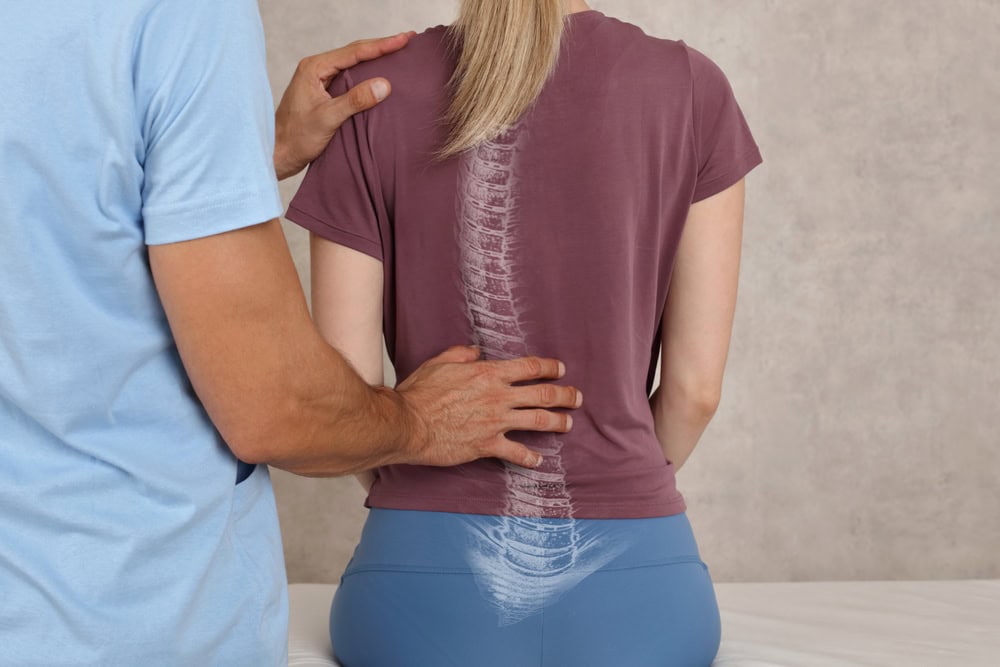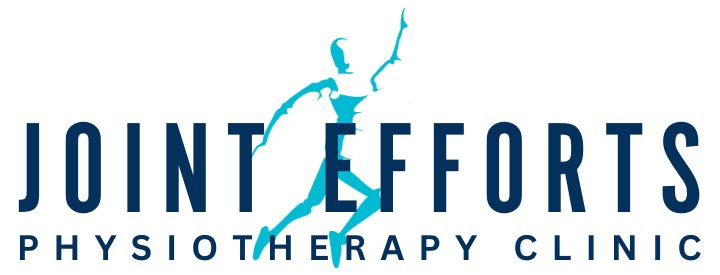Scoliosis

Best Physiotherapy Treatment for Scoliosis in Noida
Searching for the best Scoliosis treatment with Physiotherapy in Noida? Is the curvature disorder making your life and pregnancy life difficult? If yes, then find the best scoliosis treatment in Noida at Joint Efforts Physiotherapy Clinic have the solution. Our clinic is equipped with the best technology handled by well-trained staff to provide you with world-class physiotherapy services. We will help you diagnose your condition and tailor the best treatment for scoliosis for you.
Scoliosis, in simple words, is a disorder in which the spine curves into “S” or “C”. This abnormal curvature of the spinal cord can occur at any age but mostly affects adolescents. This disorder makes a woman’s life complicated if she is pregnant. This article focuses on the impact of scoliosis on an individual life and its treatment.
Scoliosis category based on Age
- Infantile Scoliosis: Affects infants of age group 0-3 years and can be treated.
- Juvenile Scoliosis: Juvenile Scoliosis occurs in children aged 4-10 years and can be treated without the need for surgery.
- Adolescent Scoliosis: This Scoliosis is most common and attacks an individual in the growing age of 11-18 Years.
- Adult Scoliosis: This disorder arises if scoliosis is untreated during childhood. This can occur in old age due to degenerative changes in the spine.
Scoliosis and Pregnancy
Pregnancy is the most crucial stage of a woman’s life but if she is suffering from scoliosis this stage becomes more challenging and painful. Pregnant women with Scoliosis disorder can face the following problems:
- Pregnant women may suffer from severe back pain due to changes in body posture and weight gain.
- If Scoliosis is severe then it can affect the lung capacity adversely and pregnant women face difficulty in breathing.
- The shape and size of pelvic muscles can change during pregnancy which makes vaginal delivery difficult. Pregnant women are advised to get the help of good doctors for successful delivery.
Causes of Scoliosis and Risk Factors
It is hard to say exactly what causes this curvature disorder in the spine especially in idiopathic cases. The following factors can play a role in the development of Scoliosis:
- The first factor can be Genetics, if someone in the family has a history of Scoliosis then it increases the risk of passing of disorder to the next generation.
- Cerebral Palsy and Muscular Dystrophy are the diseases that can cause scoliosis.
- In old age, scoliosis disorder can occur due to spinal degeneration.
- This can also occur during pregnancy during the developing stage of the womb.
Manage Scoliosis with Physiotherapy at Joint Efforts Physiotherapy Clinic, Noida
Scoliosis can make life difficult if not diagnosed on time. It especially gives hard time to elderly and pregnant women. But the solution is here, at Joint Efforts Physiotherapy Clinic, we are the best physiotherapy clinic to treat scoliosis in Noida. Our trained team of physiotherapists treats you with compassion and works closely with you to provide tailored solutions. Some of the physiotherapy techniques we use to treat scoliosis are:
Postural Training and Alignment Techniques
Physiotherapists use these techniques to help correct or improve postural imbalance, and to encourage a more neutral spine position. Techniques include:
- Mirror and Visual Feedback: Patients practice correct posture with the help of mirrors or video feedback to get insight into their position and adjust their spinal alignment.
- Body Awareness Exercises: These exercises teach patients to be aware of their spinal alignment and develop strategies to maintain proper posture while performing everyday activities.
Core and Back Strengthening Exercises
A strong core and back are essential for supporting the spine and reducing the strain on misaligned areas. Physiotherapists use targeted exercises to strengthen these muscles and reduce curvature progression:
- Core Stability Exercises: Planks, bridges, and other core exercises strengthen the muscles surrounding the spine, providing better support and stability.
- Back Extensor Strengthening: Exercises like Superman extensions and prone back lifts target the back extensors, helping to counterbalance the spine’s natural curve and maintain upright posture.
- Pilates: Controlled movements in Pilates help develop core strength, flexibility, and body awareness, which are beneficial for scoliosis management.
Stretching and Flexibility Exercises
Stretching exercises decrease muscle tightness around the spine and enhance the flexibility of the muscles affected by scoliosis. Increasing flexibility can enhance the range of motion in the affected area, which helps relieve discomfort:
- Lateral Stretches: Lateral stretches target the sides of the body, which are affected by scoliosis and suffer an imbalance. Examples of stretches include side stretches and lateral trunk bends.
- Hamstring and Hip Flexor Stretching: Tight hamstrings and hip flexors stretches can exacerbate scoliosis discomfort, so while performing these stretches these areas are given more priority.
- Thoracic Spine Mobility Exercises: These exercises target the thoracic or upper back region to improve mobility, which is often limited in people suffering from scoliosis.
Schroth Method for Scoliosis
The Schroth Method is a specialized scoliosis treatment plan that focuses on personalized exercises to derogate, elongate, and stabilize the spine in a more aligned position. Our Physiotherapists are trained in this method to guide patients through exercises. These exercises emphasize three-dimensional breathing and specific muscle activation to counter the scoliotic curvature:
- Rotational Angular Breathing (RAB): RAB is a unique breathing technique that helps expand and elongate the concave side of the spine.
- Isometric and Isotonic Exercises: These exercises are customized based on the curvature pattern in the patients and focus on strengthening the muscles that help support a straighter spine.
- Self-Correction Techniques: Patients learn how to adjust their posture and body alignment independently through self-correction techniques. These techniques promote better posture throughout daily activities.
Balance and Proprioception Training
Scoliosis can adversely affect the body’s center of gravity, leading to major balance issues. Proprioception is our body’s ability to sense movements and position. Physiotherapists prescribe these exercises to improve the sense of movement and the body’s position, enhancing balance and coordination:
- Balance Board Exercises: In this exercise, the patient stands on a balance board which helps improve stability, posture, and proprioception.
- Single-Leg Balance: Exercises like standing on one leg, often integrated with reaching or moving tasks help the patients improve core control and balance.
- Dynamic Balance Activities: Walking on uneven surfaces or participating in activities that require shifting weight can improve the overall balance of the body.
Functional Mobility Training
Physiotherapists work closely with patients to improve the ease of performing daily tasks that may be affected by scoliosis. Functional mobility exercises mimic real-life movements to help patients better manage their condition in everyday situations. This training includes:
- Modified Lifting Techniques: Patients learn proper lifting mechanics to avoid strain on the back and prevent the worsening of the condition.
- Functional Reaching and Bending: Exercises that mimic reaching, bending, and other daily life tasks help patients maintain good alignment and avoid pain.
- Body Mechanics Education: Training on how to sit, stand, and move properly to minimize the impact of scoliosis on daily activities helps patients regain normalcy in life.
Pain Management and Manual Therapy
Physiotherapy deals with scoliosis with manual therapy and methods for managing pain and relieving muscle tension caused by this disorder. Manual therapy, along with modalities like heat therapy, can effectively reduce discomfort. These are:
- Soft Tissue Massage: Targeted massage is performed by physiotherapists to relieve muscle tightness and reduce tension around the spine.
- Myofascial Release: Myofascial Release addresses connective tissue restrictions and improves blood flow, which can significantly reduce pain and stiffness.
- Heat Therapy and Electrical Stimulation: Heat therapy relaxes tight muscles and electrical stimulation reduces pain signals, together these techniques help to manage discomfort associated with scoliosis.
Preventive Measures for Scoliosis
Even if the causes of Scoliosis are unknown, physiotherapists and posture experts develop a few practices to help patients maintain overall spinal health:
- Regular exercises like Swimming, Yoga, and Pilates can strengthen back muscles and reduce the risk of scoliosis. Choose exercises that give strength to the core.
- Take a diet rich in calcium and Vitamin D to maintain bone health and a strong spine.
- Practice good posture and purchase ergonomic furniture to maintain posture while standing, lifting weights, or sitting.
- Regular check-ups from childhood to adolescence can reduce the risk of scoliosis and treating it can be easy as compared to old age.
Conclusion
Scoliosis is a spine disorder that needs a multifaceted approach to diagnosis, and cure. From primary diagnosis through Radiological images to undergoing surgery, there are so many ways to treat this disorder but among all, physiotherapy shines the most. If you are looking for the best physiotherapy treatment for scoliosis in Noida, consider visiting Joint Efforts Physiotherapy Clinic. Scoliosis can affect people of any age but it makes things difficult for pregnant women as they can face complications during delivery. Our clinic has the best physiotherapists in Noida to treat scoliosis. We design personalized exercise plans and tailored therapies to manage pain and restore spinal health. Our physiotherapists also help make essential changes in posture and ergogenic advice to help patients adjust in life and find balance. So just google the best physiotherapy treatment for scoliosis “near me” and book an appointment with the best physiotherapists in Noida at Joint Efforts Physiotherapy Clinic. Do not let abnormal spinal curvature stop you from leading a normal life, book and get the best physiotherapy treatments in Noida.


